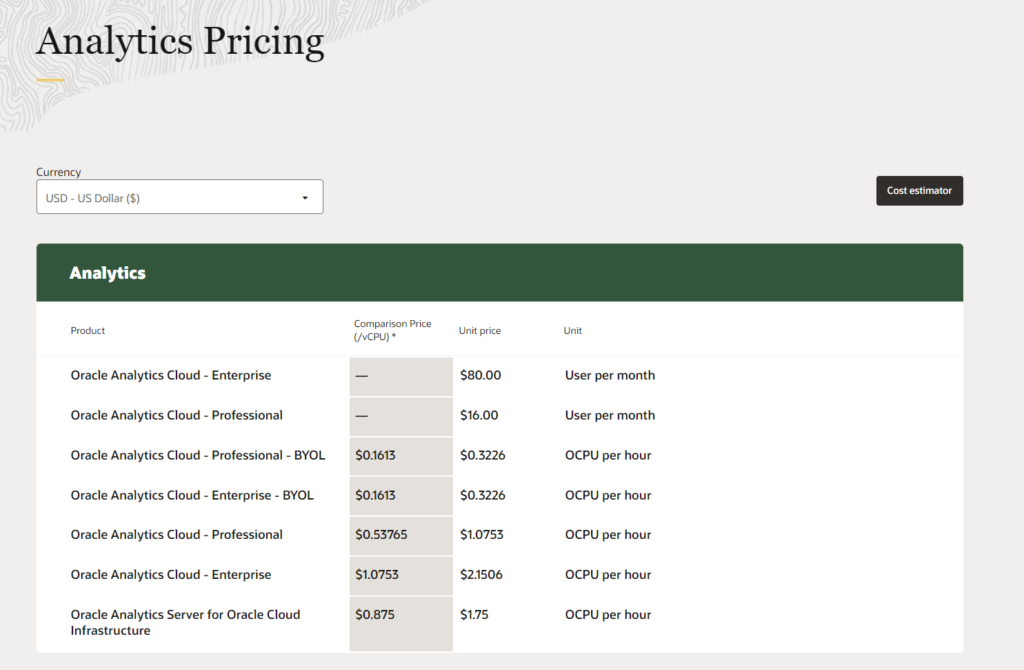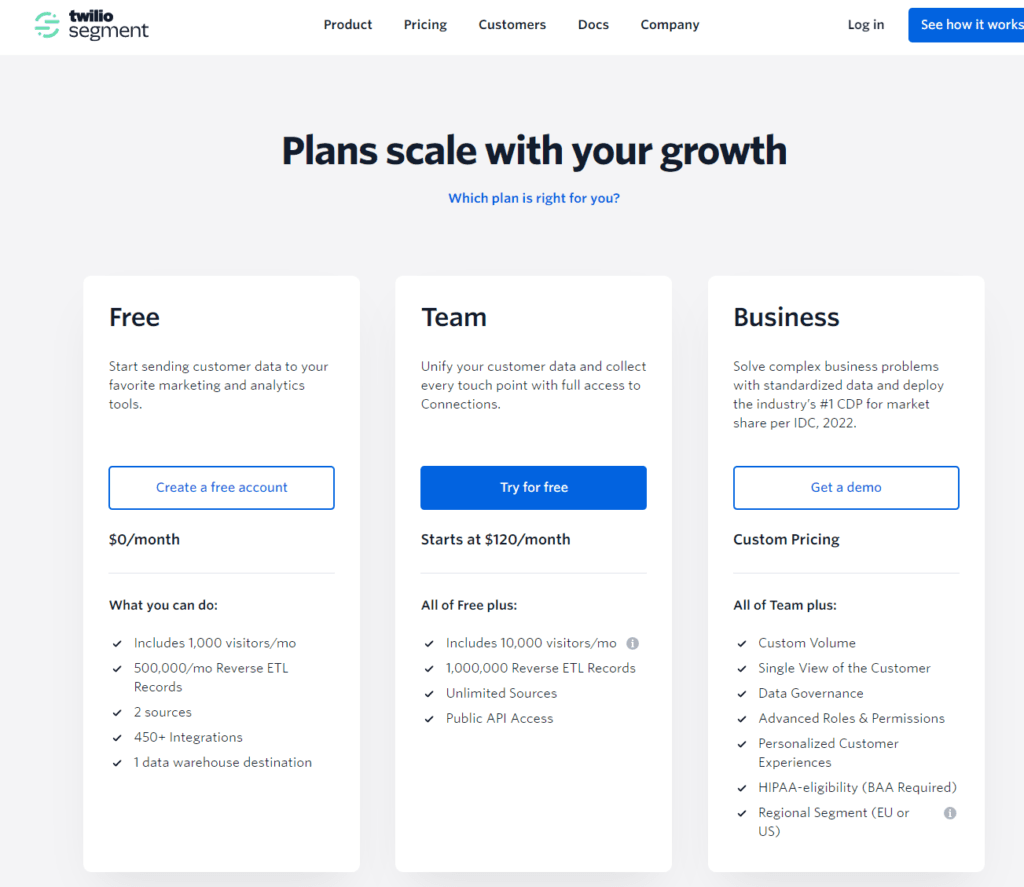Hey there! If you’ve ever felt lost in the maze of analytics tools, wondering which path leads to treasure and which to a dead end, you’re not alone. Today, we’re lighting a torch to guide you through two major contenders: Oracle Analytics Cloud (OAC) and Segment. Whether you’re a data-driven marketer, a product manager hungry for insights, or just someone who loves making sense of numbers, this showdown is crafted with you in mind. We’re here to cut through the jargon and serve up the facts you need—in plain English—to choose your analytics champion. So, let’s dive into the heart of the matter and discover which tool might just be the secret weapon your business needs.
| Oracle Analytics Cloud | Segment |
|---|---|
 |  |
| G2 Score -4.0 out of 5 | G2 Score -4.6 out of 5 |
| TrustRadius Score -8.1 out of 10 | TrustRadius Score -8.3 out of 10 |
User Interface and Experience: Oracle Analytics Cloud vs Segment
This comparison focuses on how Oracle Analytics Cloud (OAC) and Segment approach the design and usability of their platforms, crucial for enabling teams across an organization to harness data insights effectively.
Oracle Analytics Cloud: Comprehensive Yet Complex
Oracle Analytics Cloud offers a user interface that’s as deep and comprehensive as the analytics capabilities it houses. For those who are familiar with Oracle’s ecosystem, the interface presents a consistent look and feel, blending in with other Oracle Cloud services. It’s designed to cater to a wide range of analytics activities, from data visualization and dashboard creation to advanced predictive analytics.
The strength of OAC’s interface lies in its versatility. Users can dive into detailed data analyses, craft intricate visualizations, or explore data with machine learning models—all from within the same platform. However, this versatility comes with a complexity that may pose a challenge for users new to Oracle or those with limited technical expertise. Navigating the full breadth of OAC’s capabilities often requires a steep learning curve, though Oracle provides extensive documentation and training resources to help users climb it.
Segment: Streamlined and User-Friendly
In contrast, Segment prioritizes a streamlined user experience designed to make data integration and management as intuitive as possible. Its interface is clean and straightforward, focusing on the core functionality of collecting, unifying, and sending data to various destinations. This simplicity is Segment’s hallmark, making it accessible for users of all technical backgrounds.
Segment’s dashboard offers a clear view of data flows, integration health, and the configuration of data sources and destinations. It simplifies the complexity of data pipelines, providing a user-friendly environment where setting up and managing data integrations is a breeze. This approachable design encourages broader adoption across teams, enabling marketers, product managers, and developers to collaborate more effectively on data-driven initiatives.
Pricing
Pricing is a pivotal factor for businesses when choosing between Oracle Analytics Cloud (OAC) and Segment, as it directly impacts the return on investment and the overall budget for data analytics initiatives. Let’s dissect the pricing models of both platforms to understand which might offer the best value for your specific needs.
Oracle Analytics Cloud: Enterprise-Oriented Pricing

Oracle Analytics Cloud offers a tiered pricing model that caters to businesses of varying sizes, with costs scaling based on the volume of data processed and the level of computational resources required. The pricing structure is designed to accommodate the expansive needs of enterprise-level analytics, with several tiers offering increasing levels of functionality and support.
OAC operates on a subscription model, where businesses pay a monthly fee that varies depending on the package and options chosen. This can include data storage, query processing power, and access to advanced analytics features. Specific pricing often requires direct consultation with Oracle to tailor the package to your business’s needs, considering factors like cloud storage requirements and the number of users. Businesses should account for potential additional costs, such as data migration at the onset and increased subscription fees as data needs grow.
OAC’s pricing model is built for scalability, offering businesses the flexibility to start with a foundational package and expand as their analytics demands increase. However, the platform’s comprehensive capabilities and enterprise focus mean it might represent a significant investment, particularly for smaller businesses or those with more modest analytics needs.
Segment: Flexible Pricing for Scalable Integration

Segment provides a nuanced pricing model that reflects its emphasis on data integration scalability and flexibility. Known for its ability to simplify complex data pipelines, Segment offers pricing that allows businesses to grow their use of the platform organically. Segment offers a Free tier, designed for startups and small businesses to begin integrating data across a limited number of sources and destinations.
As businesses grow, they can move to the Team or Business tiers, which offer increased limits and additional features. These tiers are priced based on the volume of monthly tracked users (MTUs), making the cost scalable to the size of the business and its data operations. For larger enterprises with extensive data integration needs, Segment provides custom pricing options that include dedicated support and advanced features, tailored to the specific requirements of the business.
Segment’s pricing model is attractive for its low barrier to entry and its ability to scale with a business’s growth. This makes it particularly appealing for startups and mid-sized businesses looking to establish or expand their data infrastructure without a significant upfront investment.
Data Integration and Management
In the vast world of analytics, the power to seamlessly integrate and manage data from a variety of sources is akin to holding the master key to a treasure chest. Let’s see how OAC and Segment unlock the potential of your data.
Oracle Analytics Cloud: The Versatile Powerhouse
Oracle Analytics Cloud stands tall with its broad shoulders capable of shouldering the heavy load of enterprise data. It’s like a skilled alchemist, transforming raw data from myriad sources into golden insights. OAC offers deep and flexible data integration capabilities, allowing you to pull data from Oracle databases, third-party sources, cloud applications, and even spreadsheets. This platform doesn’t just ingest data; it nurtures it, offering robust data management features that cleanse, enrich, and model your data until it’s ready to reveal its secrets.
But OAC’s magic doesn’t stop at integration. Its data management is a ballet of precision and sophistication, with features designed to handle the complexities of large-scale enterprise data. Automated data preparation saves countless hours, while advanced data modeling tools let you craft the perfect lens through which to view your insights.
Segment: The Agile Connector
Imagine Segment as a nimble fox, darting between data sources with ease and connecting them with the finesse of a master weaver. Segment specializes in real-time data integration, offering a straightforward way to collect, unify, and route your data to over 300 destinations, including analytics platforms, marketing tools, and data warehouses. It’s the Swiss Army knife in your data toolkit, equipped to tackle the challenges of a fragmented digital landscape.
Segment shines in its ability to democratize data across an organization. By simplifying data collection and unification, it ensures that teams from marketing to product development have access to the insights they need, when they need them. It’s not just about integration; it’s about making data actionable across every touchpoint of your business.

Related: Check out our free SEO suite

Customization and Flexibility: Oracle Analytics Cloud vs Segment
Continuing our in-depth comparison between Oracle Analytics Cloud (OAC) and Segment, let’s explore another key area that often influences the selection of an analytics platform: Customization and Flexibility. This aspect examines how each tool adapts to specific business needs, from custom data models to tailored analytics reports.
Oracle Analytics Cloud: Tailored Analytics on a Robust Platform
Oracle Analytics Cloud stands out for its robust customization capabilities, catering to businesses that require tailored analytics solutions. OAC provides users with the tools to customize everything from data models and visualizations to entire dashboards and reports. Its flexibility shines in the ability to integrate custom machine learning models and embed analytics into other applications, offering a deeply personalized analytics experience.
The platform’s strength lies in its versatility, supporting a wide range of data sources and offering extensive options for customization. This enables businesses to mold the platform according to their specific analytics strategies, whether they’re focusing on financial forecasting, customer behavior analysis, or operational efficiency. However, leveraging OAC’s full customization potential often requires a solid understanding of data analytics and possibly some technical expertise in data science.
Segment: Streamlining Data Flows with Custom Integrations
Segment offers a different kind of flexibility, focusing primarily on the customization of data collection and integration workflows. It allows users to tailor how data is collected from various sources and routed to over 300 destinations, making it incredibly adaptable to a business’s evolving tech stack. Segment’s real power in customization lies in its ability to transform and enrich data in transit, ensuring that the right data reaches the right tools at the right time.
While Segment may not offer the same level of customization in analytics visualizations as OAC, it excels in providing a flexible, user-friendly platform for managing data flows. This makes Segment particularly valuable for businesses looking to streamline their data pipelines and ensure that their analytics, marketing, and product development tools are always fueled with high-quality, actionable data.
Conclusion
Regardless of which tool you choose, the journey towards leveraging analytics for business insights is an ongoing process. Encouraging a culture of data literacy, where decision-making is guided by insights, is crucial for any organization aiming to thrive in the digital age. Both Oracle Analytics Cloud and Segment open pathways to insightful, data-driven decision-making, but the most effective analytics platform is the one that not only meets your current needs but also supports your growth, fosters innovation, and transforms data into actionable strategies that drive success.
READ NEXT:
- IBM Cognos Analytics vs Looker: The Best Analytics Tool for You
- Oracle Analytics Cloud vs SAS Visual Analytics: The Best Analytics Tool for You
- Oracle Analytics Cloud vs QlikView: The Best Analytics Tool for You
- Hotjar vs Mouseflow: The Best Analytics Tool for You
- Mouseflow vs Segment: The Best Analytics Tool for You
- 11 Marketing Analytics Tools to Elevate Your Data-Driven Strategies
- 29+ Digital Analytics Software to Skyrocket Your Digital ROI






















Comments are closed.